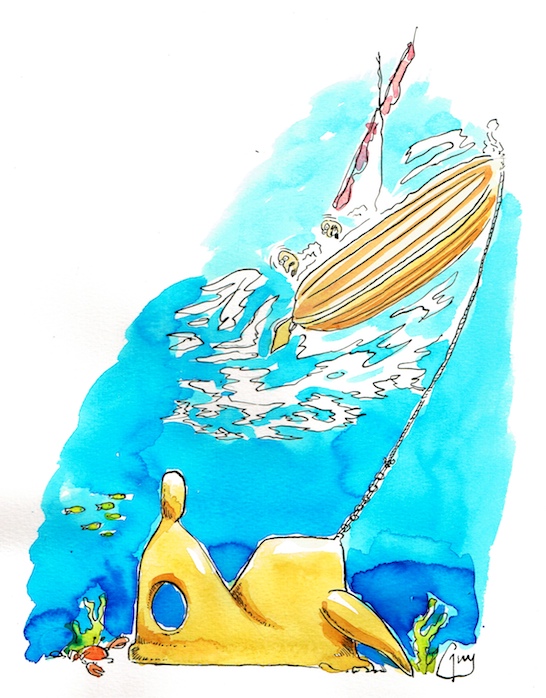I was taught early on that an anchor and cable are the best insurance policy money can buy. But which is the best type?
So what is the best anchor? The Phoenicians, Greeks and Romans probably reckoned that it was a large lump of rock that Henry Moore would have been proud of. In time, perhaps, something a bit more edgy and Hepworth-like evolved but there would be no great evolution in anchoring until the bronze and iron ages, since when all manner and shapes and sizes of anchors have evolved, each one, of course, being the best.
The same goes for anchor cable. Grass, sisal and hemp gradually gave way to chain and wire and then, strangely, back to rope, synthetic this time, or a combination of metal and man-made fibre. In each case the anchor and cable were, in the skipper’s view, the best there could be because the safety of his vessel, his cargo and crew was dependent on the strength and holding power of the right combination and the correct technique when using them.
I was taught at an early stage in my sailing education that an anchor and cable were the best insurance policy that money can buy. When the pontoons in the marina are being blown away, when you’re dragging onto a lee shore or when trampolines are bouncing down the high street it’s the best anchor and cable that are going to save you.
Anyone wanting evidence of this should read the account of the Channel Race storm in the 1950s in Heavy Weather Sailing. When the crew of Bloodhound abandoned ship they left her anchored. After the storm, expecting to find a pile of expensive matchwood on the beach instead they found her still afloat and still at anchor. But the chain cable had stretched so much that it had become a solid bar and the flukes of the anchor had completely worn away.
Anchors and anchoring bring out the very worst in sailors. Red-faced skippers at the wheel bawl at their trembling spouses on the foredeck. “Not like that you stupid woman! Surge another ten metres and snub the cable to see how she settles!” Thinks spouse: “If you spoke to me like that at home you’d be snubbed and severely rationed in all areas!” I witnessed such a scene when anchored in a small bay on the south coast of Lanzarote. The skipper bellowed, until his wife, whom I had met the previous day and was as mild-mannered a person as you can imagine, suddenly snapped, hurled the windlass handle overboard and yelled back “if you’re so f***ing clever why don’t you f***ing do it yourself!”
Another phenomenon is the strange magnetic effect of a boat at anchor. Imagine a deserted Scottish loch with a classic McGruer anchored securely, anchor light rigged and crew enjoying a dram in the cockpit. It’s not a tight anchorage and the choices are multiple but when a second boat enters why does she always head straight for the boat already there?
I wonder whether you can judge a skipper or owner by his or her anchor? There are the factory-fresh cruisers with the standard 35lb look-alike CQR, 10 metres of chain and a pile of multiplait, none of which are used for anything other than the occasional lunchtime, light weather anchorage and a good thing that is too.
At the other end of the scale are the weathered world-girdlers with more anchors than days of the week and so much cable (all chain, of course) that their boats permanently float bows down. “Better out than in!”, they brag, as they scythe their way round the shallow anchorage, 200 metres of half-inch chain laying waste to anything that gets in the way.
Between these two come a huge variety of combinations of anchor and cable. There are claws, ploughs, spades, shiny stainless-steel objects, fishermen, patented Admiralty pattern and many more. Skippers are close to obsessional about their ground tackle, even as they drag through the anchorage in the early hours. “It’s brilliant in sand,” they later boast.
None of this answers the question of which is the best small boat anchor. I can give you the answer. It’s the one on your bow right now and no one will persuade you otherwise.
They found her still afloat and at anchor.
But the chain cable had stretched so much
it was a solid bar and the anchor’s flukes
had completely worn


